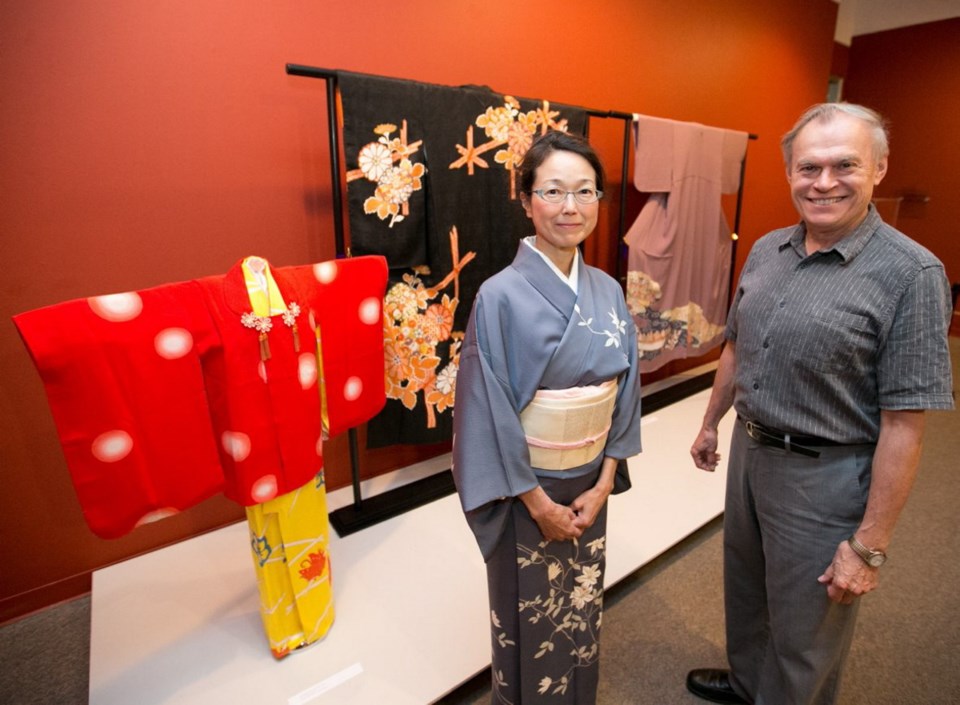What: From Geisha to Diva: The Kimono of Ichimaru and Kimono: Japanese Culture in its Art Form
When: Opening Friday, runs through Oct. 19
Where: Art Gallery of Greater Victoria
There was more to the woman who wore the kimonos displayed at the Art Gallery of Greater Victoria than the entertainment she gave men as a geisha.
Ichimaru, who became one of the world’s most famous geishas, bought her way out of servitude with the money she made as a pop star.
“From about 1926 to 1933 there was nobody more famous in Japan; she was the Madonna of her age,” said Asian arts curator Barry Till.
Ichimaru’s kimonos and other belongings have returned to their home at Art Gallery of Greater Victoria after more than a decade of travel. They narrowly avoided hurricane Katrina, when they were scheduled to be shown in Baton Rouge, and also declined an invitation to be featured in the film adaptation of Memoirs of a Geisha. In the process of touring, they picked up more than $100,000 in rental fees for the Victoria gallery, according to Till.
They are now featured at the AGGV for the first time since 2002 — this time, along with a companion show called Kimono: Japanese Culture in its Art Form.
Guest curator Hitomi Harama, a Victoria-based kimono specialist, said she wanted to introduce audiences to the art of the traditional Japanese garments with the new show.
“The intent of this exhibition is to showcase the codes and the culture behind kimono, its artistic form and complexity, along with the etiquette of Kimono attire for different seasons and occasions,” she said.
“Kimono is not simply an article of clothing; it embodies centuries of cultural development and history in Japan.”
Most of the garments featured in Kimono have been shipped from Harama’s family collection in Japan. Both her parents and grandparents worked in the kimono business before her, giving the family 85 years in the industry.
They were all designed in the 20th century and range from an elaborate white wedding kimono embroidered with rich silver thread to the casual and boldly coloured winter kimonos. Some are decorated with chrysanthemums, others with village scenes. There’s a family-sized display (back when mortality rates were higher, there were special celebrations for children who lived to be three, five and seven).
Harama, who has lived in Victoria for 18 years, said she hopes to teach both Westerners and Japanese youth, who didn’t grow up with the tradition of kimono, about the art.
The oldest kimono featured in the exhibit dedicated to Ichimaru is from the 1930s — a simpler kimono decorated with geese. At the time, Ichimaru was still actively working as a geisha.
Although geishas were engaged in a form of prostitution, Till said it was a high-class position that came with education. Little is known about Ichimaru’s early life, but she quickly came to be known for her “nightingale” voice — the gift that would earn her enough money to buy her freedom.
She was signed to Victor Records and recorded songs for radio and films, as well as being a regular on television programs.
“Once she earned enough money, she got out of the geishahood, but continued to live and perform in the geisha style,” Till said.
The items in the exhibition include her shamisen (a stringed instrument), her wig and hair pins, jewelry, photos with Charlie Chaplin and the erotic, illustrated books that geishas often shared with their clients.
Ichimaru died at 91 in 1997, leaving her estate to her confidante Fumi Suzuki. Suzuki donated many of her belongings to a museum in Nagano. But Vancouver resident Yoshiko Karasawa, who is married to philanthropist Michael Audain, convinced Suzuki to donate a large portion to the AGGV, which already had a significant Asian art collection, Till said.
